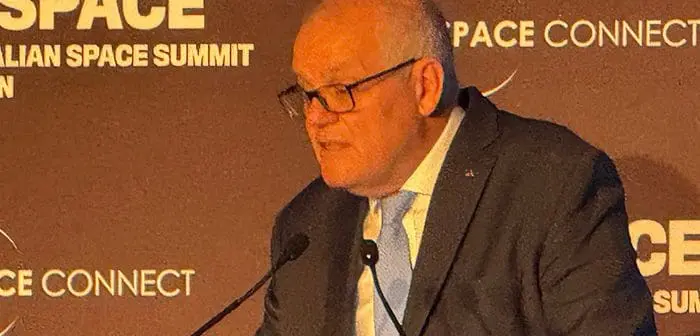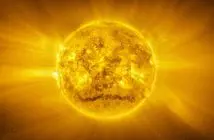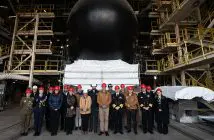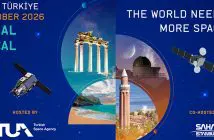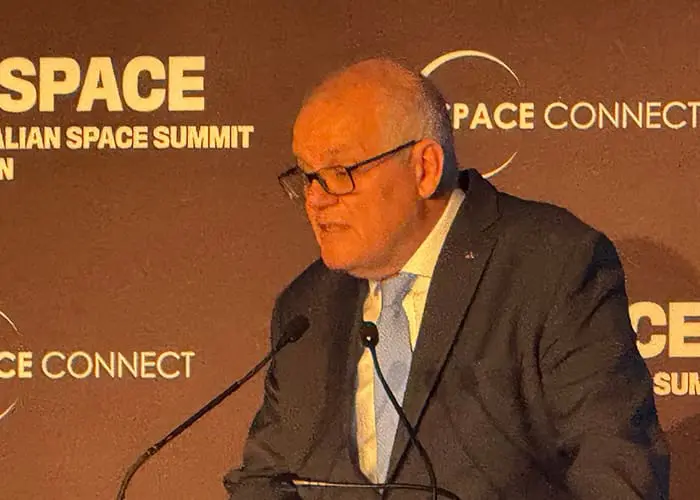
Former Prime Minister Scott Morrison delivered a wide-ranging address at a Space Summit in Sydney yesterday outlining his vision for Australia’s future in space.
Now Chairman of the Advisory Board at Space Center Australia, Morrison began by recounting the strategic and economic foundations laid during his time in office before casting forward to a future in which Australia emerges as a key spacefaring nation.
“In 2019, I stood on the South Lawn of the White House and reaffirmed Australia’s commitment to our enduring partnership with the United States,” Morrison recalled. “The very next day, I stood at NASA Headquarters to announce Australia’s $150 million investment to support our involvement in the Artemis program. That moment marked the start of a new chapter for our space industry.”
Investing in Sovereignty and Science
Morrison’s government initiated a flurry of investments aimed at growing Australia’s space sector. These included $50 million for the Trailblazer program to develop an Australian-made lunar rover and over $40 million for space demonstration projects spanning robotics, communications, propulsion and remote medicine. More than $25 million in grants were also allocated to strengthen the capacity of Australian firms to join international supply chains.
The creation of the Australian Space Agency in Adelaide was a flagship achievement. Complementing it was the SmartSat CRC, Australia’s largest space research collaboration, receiving $55 million over seven years and attracting nearly $190 million in co-investment. Geoscience Australia received $225 million to modernise the National Positioning Infrastructure Capability, integrating over 700 reference stations for centimetre-level accuracy in agriculture, mining, and surveying.
In March 2022, Morrison’s government committed $1.2 billion to the National Space Mission for Earth Observation (NSMEO), a program designed to give Australia sovereign capability in gathering vital environmental and agricultural data via four locally built satellites.
“This was never just about rockets,” Morrison emphasised. “It was about securing Australia’s economic and scientific future.”
Defence in Orbit
Morrison’s strategy also emphasised the intersection of space and national defence. The 2020 Defence Strategic Update recognised space as a warfighting domain for the first time, fundamentally repositioning the Australian Defence Force (ADF) from a passive consumer to an active contributor of sovereign space capabilities.
“We committed $7 billion over a decade to projects like JP9102 for secure SATCOM and JP9360 for space-based ISR [Intelligence, Surveillance, and Reconnaissance],” he noted.
Initiatives also included the development of electronic warfare capabilities to ensure ADF operational freedom in space and the establishment of Defence Space Command in 2022.
Morrison acknowledged the prerogative of the Albanese government to cancel or consolidate some of these projects. “I haven’t come here to contest those decisions,” he said. “Governments have the right to reset priorities. But I do believe the strategic case for space remains stronger than ever.”
The Global Stakes
Morrison situated Australia’s space ambitions within the wider geopolitical landscape, highlighting the escalating US-China rivalry in orbit. He cited data from the 2025 CSIS Space Threat Assessment, noting that China’s capabilities, ranging from manoeuvrable satellites and laser weapons to robotic spacecraft capable of capturing objects, pose real challenges.
“Space is now a front line,” Morrison warned. “The blurring of civil and military domains, and the dual-use nature of many technologies, makes this an increasingly contested environment.”
He underscored the strategic value of allied cooperation, particularly through the AUKUS agreement and its emerging space-focused components. The Deep-space Advanced Radar Capability (DARC), a trilateral initiative with radar sites in Exmouth, the UK, and the US, is a notable example. “The DARC system can detect and characterise objects in geosynchronous orbit and is essential for protecting our assets,” Morrison explained.
A Sky-High Economic Opportunity
Citing McKinsey estimates, Morrison underscored the economic opportunity: “The global space economy is now worth $630 billion and growing at 9% annually. By 2035, it will exceed $1.8 trillion – faster than semiconductors.”
He painted a picture of explosive satellite growth, from today’s 12,000 active satellites to an estimated 60,000 by 2040. Commercial actors like SpaceX, Amazon, and China’s BOAC are leading the charge, deploying vast constellations in low Earth orbit. Morrison argued that Australia must seize this moment.
“By 2034, Australia can become a key contributor to allied capabilities, providing southern hemisphere coverage, resilient launch options, and sovereign satellites that complement US, UK, and Japanese systems,” he said.
Space Center Australia: Cape Canaveral Down Under
Morrison’s new role at Space Center Australia (SCA) reflects his ongoing commitment. He described plans for a multi-use commercial spaceport at Weipa in Cape York, “Kennedy 2.0,” he called it, located just 12 degrees south of the equator.
“This is a game-changing project. There is no other spaceport in a secure jurisdiction, existing or planned, at this scale and location,” he said. “It’s not just infrastructure. It’s a catalyst for prosperity in Far North Queensland, especially for our Indigenous communities.”
SCA’s spaceport will include launch pads, manufacturing facilities, data centres, innovation labs, and mission control. Morrison emphasised that the project is being developed with Indigenous partners and is expected to have long-term economic and social impacts for the region.
Strategic Recommendations and Bipartisan Future
Morrison concluded with a series of recommendations:
- Enhance Space Situational Awareness: Expand radars and telescopes in Australia to integrate with allied networks.
- Develop sovereign SATCOM: Replace JP9102 with a new, interoperable, high-throughput satellite.
- Build sovereign launch infrastructure: Leverage Australia’s geography for polar and equatorial launches.
- Pursue joint satellite projects: Collaborate with allies like Japan and the UK to share costs and boost interoperability.
- Strengthen resilience: Improve cyber protections and establish backup capabilities to maintain operations during attacks.
“Space is no longer optional,” Morrison said. “It’s a national imperative.”
He urged bipartisan commitment to a strategic vision of Australia as a sovereign space power and vital allied partner. “Just as with intelligence and defence, this should transcend politics,” he concluded. “Australia doesn’t just look to the US. We don’t leave it to the US. This is a mutual obligation.”
From vision to infrastructure, Morrison’s roadmap signals a bold trajectory, one in which Australia not only reaches for the stars but helps secure them.
This is an AI-assisted article.

